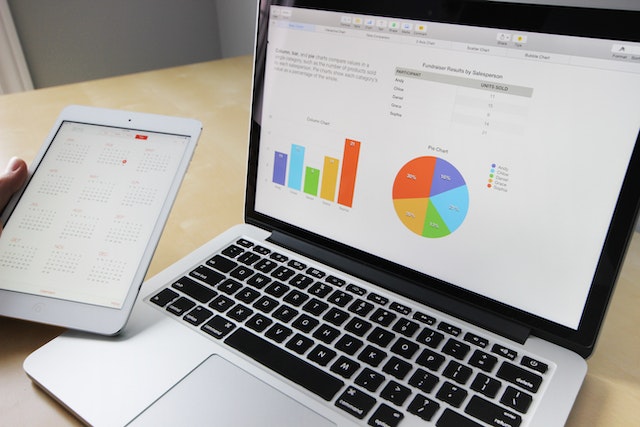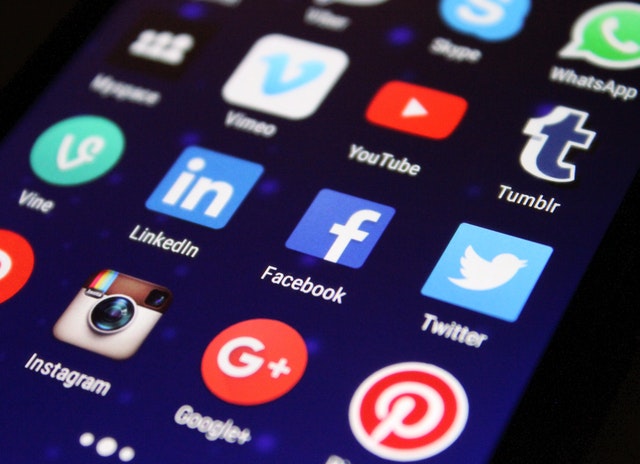Combining Direct Mail With Email Campaigns: A Multi-Channel Strategy That Converts

In a world where digital marketing often takes center stage, there’s still something undeniably powerful about tangible outreach. Imagine opening your mailbox and finding a beautifully designed postcard or an enticing catalog waiting for you. This is the magic of direct mail which is a classic strategy that has maintained its relevance even in our tech-driven era. While it’s effective, understanding Direct Mail Cost is essential for marketers aiming to balance impact with budget. Now, picture this: pairing that delightful physical piece with a well-crafted email campaign. It sounds like a match made in marketing heaven, doesn’t it? By harnessing the strengths of both direct mail and email, brands can create dynamic multi-channel strategies that not only capture attention but drive conversions too.
Understanding the Importance of Multi-Channel Marketing
Multi-channel marketing is about reaching your audience through various platforms. It’s not just a trend. It reflects how consumers interact today. Customers don’t stick to one channel. They browse online, check their emails, and still appreciate tangible mail. This diverse behavior creates an opportunity for brands to engage potential buyers wherever they are most active. Using multiple channels amplifies your message. When someone sees an ad in their inbox and then receives a postcard, the brand becomes more memorable.
The Benefits of Combining Direct Mail and Email Campaigns
Combining direct mail and email campaigns creates a powerful marketing synergy. Each method complements the other, amplifying your message across multiple touchpoints. Direct mail captures attention with its tactile nature. Receiving something physical can evoke emotions and create lasting impressions. Meanwhile, emails are quick to deliver and easy to track, providing instant engagement metrics. By integrating both channels, you reach a wider audience. Not everyone prefers digital communication; some individuals still appreciate the personal touch of traditional mail. Using data from email campaigns allows for personalized direct mail pieces that resonate more deeply with recipients. This targeted approach fosters stronger connections and encourages action.

How to Integrate Direct Mail and Email Effectively
Start by creating a cohesive theme for both direct mail and email campaigns. Use consistent branding, colors, and messaging to ensure recognition across different channels. Next, timing is crucial. Consider sending a direct mail piece first to generate interest before following up with an email. This approach keeps your brand top-of-mind. Utilize QR codes or personalized URLs in your direct mail that lead recipients directly to your website or landing page featured in the corresponding email campaign. This seamless transition can enhance user experience. Segmentation plays a key role too. Tailor both channels according to customer preferences and behaviors for better engagement rates.
How to Measure the Success of Your Multi-Channel Campaign
Measuring the success of your multi-channel campaign involves more than just looking at sales figures. You need to track various metrics that provide insights into consumer behavior. Start by analyzing response rates for both direct mail and email components. This will show you which channel resonates better with your audience. Utilize unique tracking codes on links in emails and QR codes in direct mail pieces. This helps pinpoint where conversions are coming from, allowing for smarter adjustments.
Best Practices for Implementing a Multi-Channel Strategy
Creating a successful multi-channel strategy requires careful planning. Start by identifying your target audience. Understand where they spend their time and what formats resonate most with them. Next, ensure branding consistency across all channels. Your messaging should be cohesive whether it’s in an email or on a postcard. This builds brand recognition and trust. Timing is crucial as well. Align your direct mail pieces with email campaigns for maximum impact. A well-timed follow-up email can encourage recipients to act on the information they received via mail.

In Conclusion
The landscape of marketing has evolved dramatically, and the most effective strategies embrace a multi-channel approach. Using both direct mail and email in your campaigns allows you to tap into the strengths of each channel while mitigating …





 Engagement is the heartbeat of any successful marketing campaign. Traditional static content can only go so far in capturing your audience’s attention. With interactive content, you have the power to create immersive experiences that keep users engaged from start to finish. Interactive quizzes, polls, calculators, and games are just a few examples of engaging content that can spark interest and encourage participation. By offering interactive elements, you invite your audience to participate in the conversation rather than passively consume information actively.
Engagement is the heartbeat of any successful marketing campaign. Traditional static content can only go so far in capturing your audience’s attention. With interactive content, you have the power to create immersive experiences that keep users engaged from start to finish. Interactive quizzes, polls, calculators, and games are just a few examples of engaging content that can spark interest and encourage participation. By offering interactive elements, you invite your audience to participate in the conversation rather than passively consume information actively. When it comes to running a successful marketing
When it comes to running a successful marketing 
 In this age of instant messaging and social media connections, sliding into someone’s DMs (Direct Messages) has become a common practice. But just like any form of communication, there is a right way and a wrong way to go about it. So, how can you slide into those DMs with finesse and effectiveness? Take the time to research and understand the person or brand you’re reaching out to. Show genuine interest in their content or products by engaging with their posts or leaving thoughtful comments.
In this age of instant messaging and social media connections, sliding into someone’s DMs (Direct Messages) has become a common practice. But just like any form of communication, there is a right way and a wrong way to go about it. So, how can you slide into those DMs with finesse and effectiveness? Take the time to research and understand the person or brand you’re reaching out to. Show genuine interest in their content or products by engaging with their posts or leaving thoughtful comments. When crafting the body of your content, strive for clarity and conciseness. Break down complex ideas into easy-to-understand concepts using simple language. Keep paragraphs short to enhance readability and use subheadings to guide readers through different sections. Incorporate visuals such as images or videos whenever possible, as they can greatly enhance engagement with your content. Make sure they are relevant, high-resolution, and visually appealing. Moreover, don’t forget about search engine optimization (SEO).
When crafting the body of your content, strive for clarity and conciseness. Break down complex ideas into easy-to-understand concepts using simple language. Keep paragraphs short to enhance readability and use subheadings to guide readers through different sections. Incorporate visuals such as images or videos whenever possible, as they can greatly enhance engagement with your content. Make sure they are relevant, high-resolution, and visually appealing. Moreover, don’t forget about search engine optimization (SEO).
 Without a doubt, the main reason why many eCommerce store owners choose to use Google Ads is because of the potential for high ROI. Considering how competitive the online market can be, it’s essential to ensure you get the most out of your advertising budget. With Google Ads, you only have to pay when someone clicks on your ad, meaning that if no one clicks on your ad, you don’t have to pay. This means that your advertising budget is being used more efficiently, and you can get a better return on your investment.
Without a doubt, the main reason why many eCommerce store owners choose to use Google Ads is because of the potential for high ROI. Considering how competitive the online market can be, it’s essential to ensure you get the most out of your advertising budget. With Google Ads, you only have to pay when someone clicks on your ad, meaning that if no one clicks on your ad, you don’t have to pay. This means that your advertising budget is being used more efficiently, and you can get a better return on your investment.
 Ultimately, the greatest benefit of using Google Ads is that it can help you get more leads and customers. Depending on the goals and budget of your campaign, you could increase the number of users who visit your website exponentially. By targeting specific keywords related to your product or service, you can attract people actively searching for what you offer. Not only that, but you can also target your ads to people who have already visited your website and may be more likely to convert.
Ultimately, the greatest benefit of using Google Ads is that it can help you get more leads and customers. Depending on the goals and budget of your campaign, you could increase the number of users who visit your website exponentially. By targeting specific keywords related to your product or service, you can attract people actively searching for what you offer. Not only that, but you can also target your ads to people who have already visited your website and may be more likely to convert.
 One of the most important Google ranking factors is the quality of your content. Your content must be well-written, informative, and relevant to your
One of the most important Google ranking factors is the quality of your content. Your content must be well-written, informative, and relevant to your 
 The first online marketing trend that healthcare practices should be aware of is the importance of having a
The first online marketing trend that healthcare practices should be aware of is the importance of having a  To better engage your audience on your social media, hiring the right influencer with an excellent online reputation in your industry can be a critical online marketing strategy for healthcare practices. An influencer is someone with a large online following who can promote your healthcare services or events to their followers. When choosing an influencer, it is essential to ensure that they are relevant to your industry and that their online reputation is positive.
To better engage your audience on your social media, hiring the right influencer with an excellent online reputation in your industry can be a critical online marketing strategy for healthcare practices. An influencer is someone with a large online following who can promote your healthcare services or events to their followers. When choosing an influencer, it is essential to ensure that they are relevant to your industry and that their online reputation is positive.
 One of the best ways to improve your website’s ranking on Google is to optimize it for mobile devices. In today’s world, more and more people use their smartphones and tablets to access the internet. If your website isn’t optimized for mobile devices, you’re losing out on many potential customers. To optimize your website for mobile devices, you need to make sure that your website is responsive. It means that it will automatically adjust to the size of the screen that it is being viewed on. Additionally, you should ensure that all of your content is easy to read on smaller screens.
One of the best ways to improve your website’s ranking on Google is to optimize it for mobile devices. In today’s world, more and more people use their smartphones and tablets to access the internet. If your website isn’t optimized for mobile devices, you’re losing out on many potential customers. To optimize your website for mobile devices, you need to make sure that your website is responsive. It means that it will automatically adjust to the size of the screen that it is being viewed on. Additionally, you should ensure that all of your content is easy to read on smaller screens.
 Like a moth drawn to the fire or worker bees attracted to beautiful flowers, our brains are wired to respond positively towards things that look aesthetically pleasing. If you want more customers or clients coming your way, you need a website design that is functional and beautiful, and user-friendly.
Like a moth drawn to the fire or worker bees attracted to beautiful flowers, our brains are wired to respond positively towards things that look aesthetically pleasing. If you want more customers or clients coming your way, you need a website design that is functional and beautiful, and user-friendly. Well-designed websites are aesthetically pleasing and user-friendly and can increase online orders. So if you want to see your sales numbers go up, contact us today for web design services that will drive more customers to your business or brand! Remember that everything is online now, and technology rules our lives these days, so don’t fight it and try to embrace web design for marketing instead!
Well-designed websites are aesthetically pleasing and user-friendly and can increase online orders. So if you want to see your sales numbers go up, contact us today for web design services that will drive more customers to your business or brand! Remember that everything is online now, and technology rules our lives these days, so don’t fight it and try to embrace web design for marketing instead!



